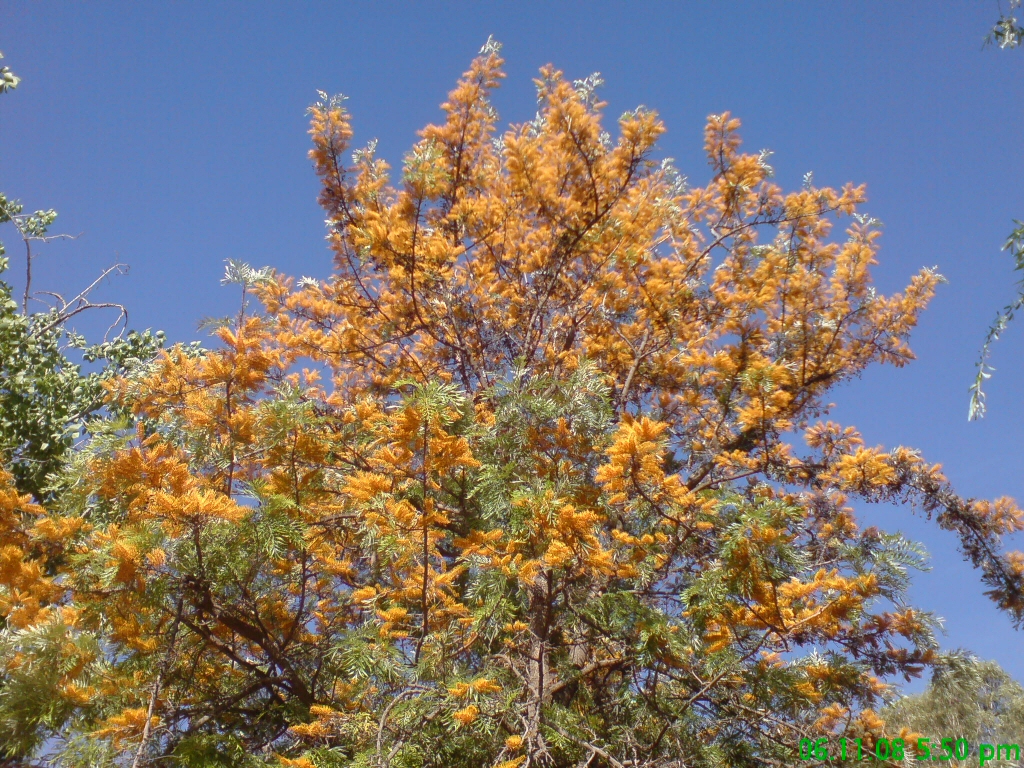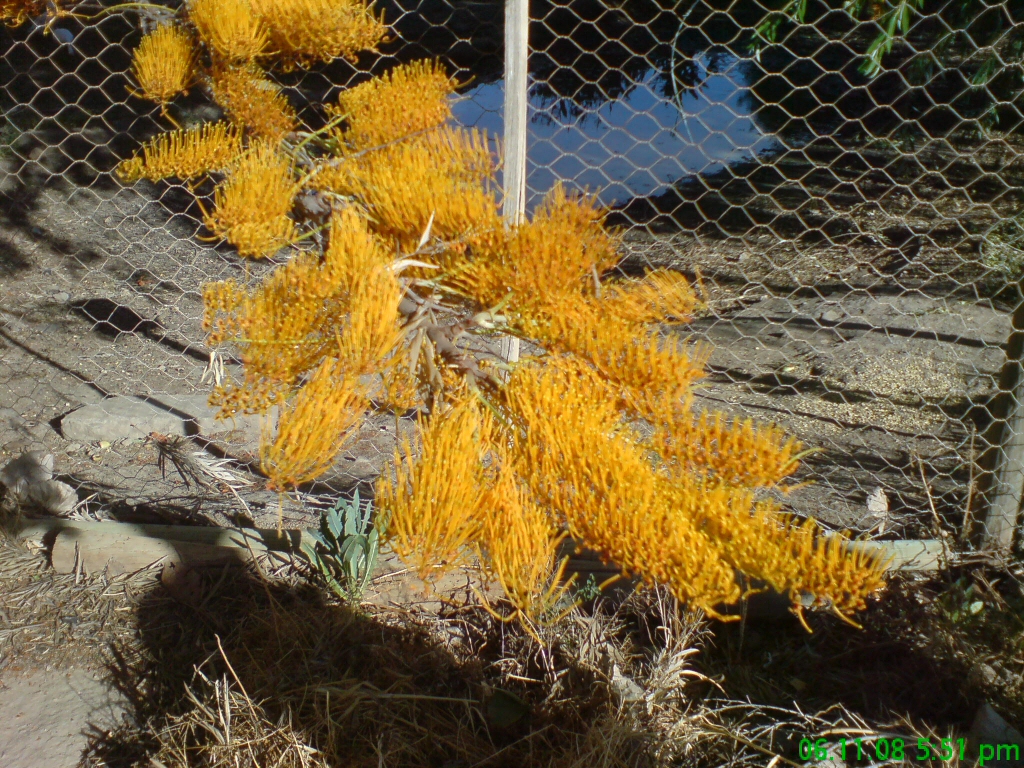This tree can vary a great deal in height, from small to large. It has dark grey bark, dark green lobed foliage and stunning golden-orange flowers. This tree is used widely in gardens, but is also very useful to control erosion around stream and river banks, and to reclaim old pasture land. The Silky Oak is one of the most popular ornamental native trees in Australia, and are widely grown here and also overseas as shade-trees and for their ability to adapt. These trees are renowned for the quality of the wood, which is used for cabinet making.
Note that Grevilleas can cause skin problems for people with sensitive skin, protective wear is recommended if affected. Also the sawdust from Grevillea robusta can be an irritant to skin and the respiratory system, protective wear is recommended when trimming and cutting and for woodworkers who use the beautiful timber



